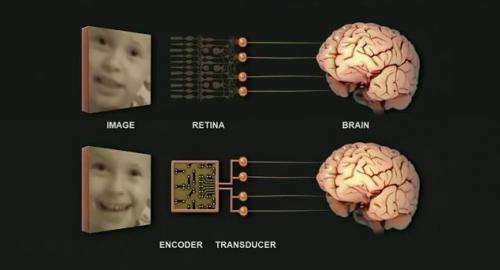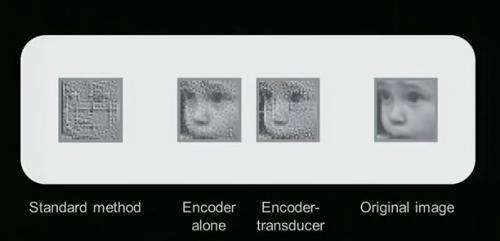December 23, 2011 report
New-age prosthetic technique enables blind mice to see

(Medical Xpress) -- A recent TEDMED talk has scientists interested in a presenter’s novel techniques to help the blind. A device with two parts, encoder and transducer, can do the job. Sheila Nirenberg, a neuroscientist and professor at Weill Medical College of Cornell University, recently discussed the results of her work at TEDMED on how the brain takes external information and encodes it in patterns of electrical activity. She set out to describe what her team found in exploring how the retina communicates with the brain.
Their prosthetic device can potentially be used to treat blindness in humans though their work thus far has been on mice.
In her lab’s research overview, she writes, “Our lab works on the general question, 'How do networks of neurons process information?', and we use a combined experimental and computational approach.”
Setting out to decode brain activity, they unraveled patterns of electrical pulses and deciphered what an animal may be seeing. She told the TEDMED audience that when tested in mice this prosthetic eye can deliver more accurate images than can other prosthetics. “Current prosthetics do not work very well,” she said. Sight-impaired people who try them succeed in seeing bright lights and edges, but she said there is opportunity to create prosthetics that are more effective than that.
Patterns of pulses coming out of the eye tell the brain what is seen. With the blind person, the brain no longer gets the necessary visual information from the eye. Her prosthetic, with its encoder and transducer, can send out signals that the brain can understand.

“I think the device can make a difference,” she said. Nirenberg and Chethan Pandarinath, both of Weill Medical College, tested their new retinal prosthetic in blind mice and found that it allowed the mice to see a baby’s face.
Fundamentally, Nirenberg is stirring up interest in the very idea that her image encoder transducer can bypass a damaged retina to send these codes to the brain. Her system mimics the complex behavior of the frontline photoreceptor cells, creating a more natural artificial message for the ganglion cells to interpret. It’s seen as a way to jump over damaged circuitry.
Nirenberg is herself eager to talk about the possibilities this may bring to medical science. Finding ways to communicate with the brain and its language can be applied to treat deafness and motor disorders. ”Understanding the code—the language of the brain--is really important,” she told the audience. “If we can understand the language of the brain, then things become possible that were not possible before.”
Of course much of the interest in seeing her team progress in restoring the vision of mice is tied to knowing what are the prospects for doing similar feats with humans. When asked if she thought that stage was ten years away, she said, no, “I am hoping less.”
© 2011 Medical Xpress














